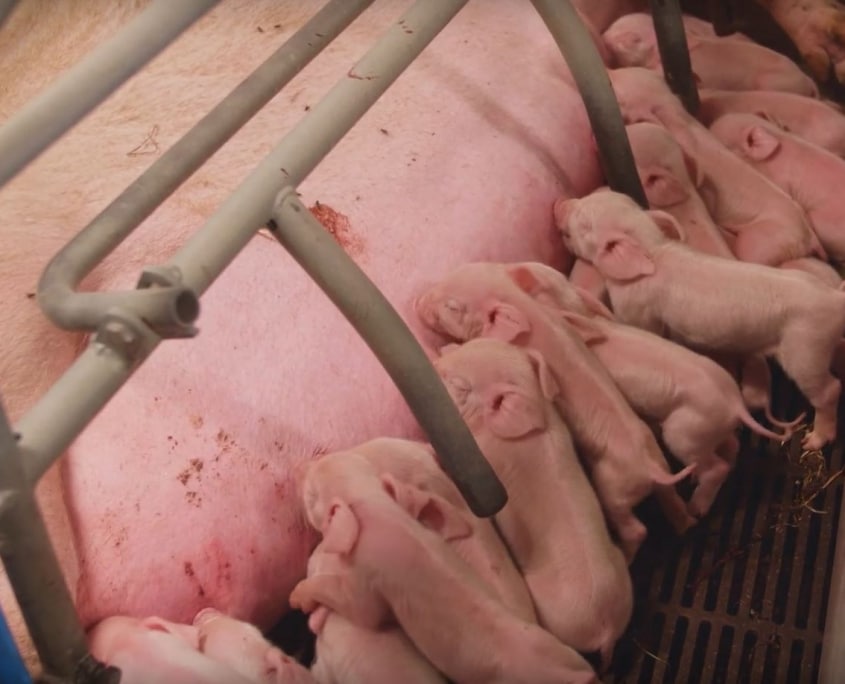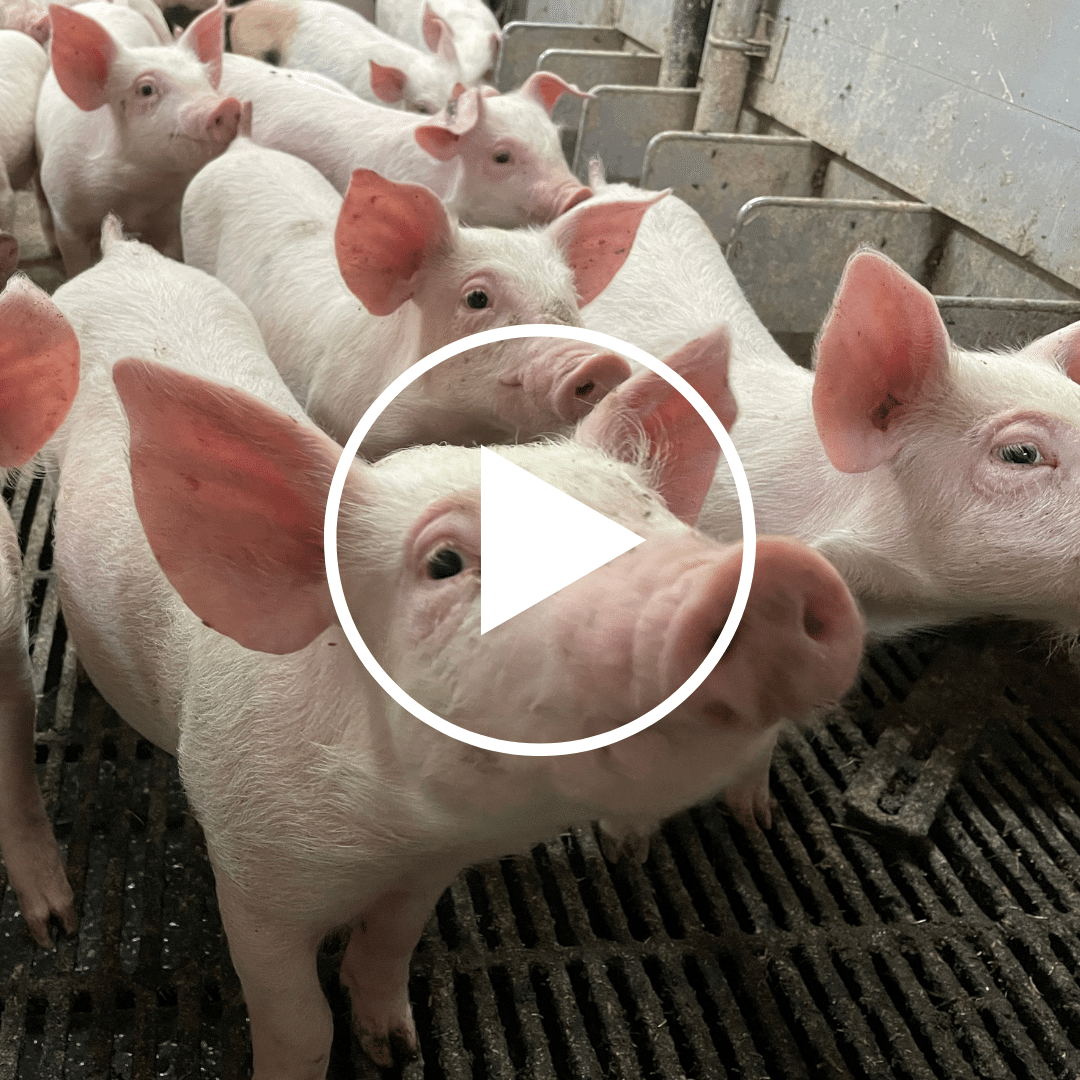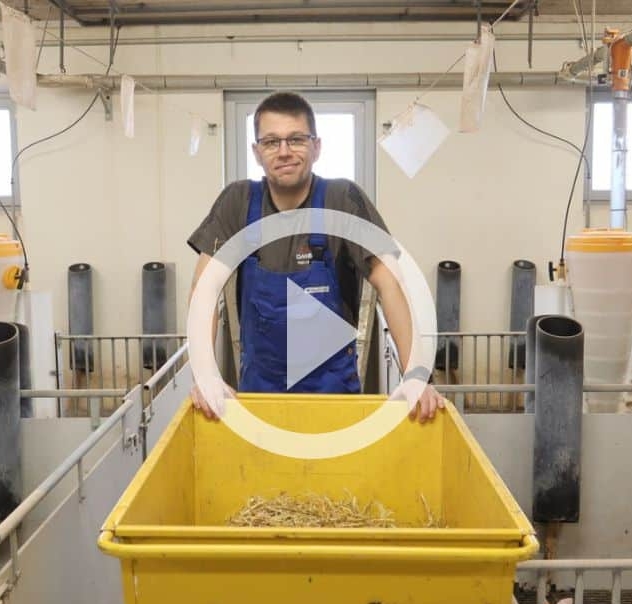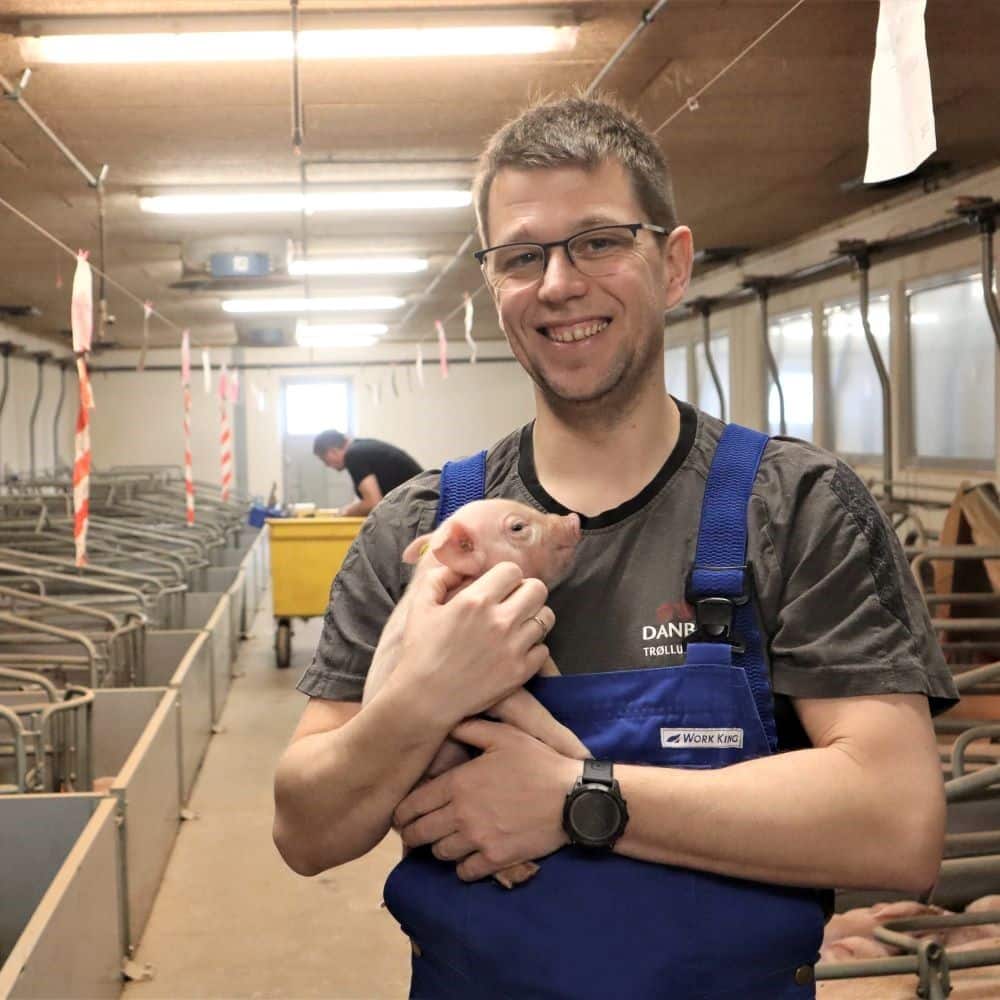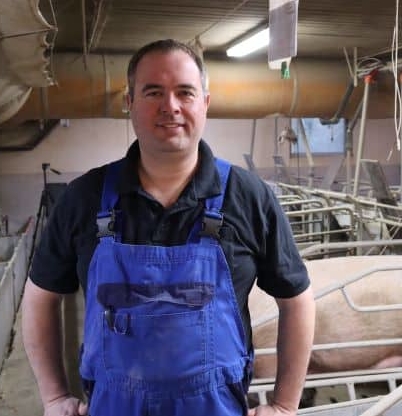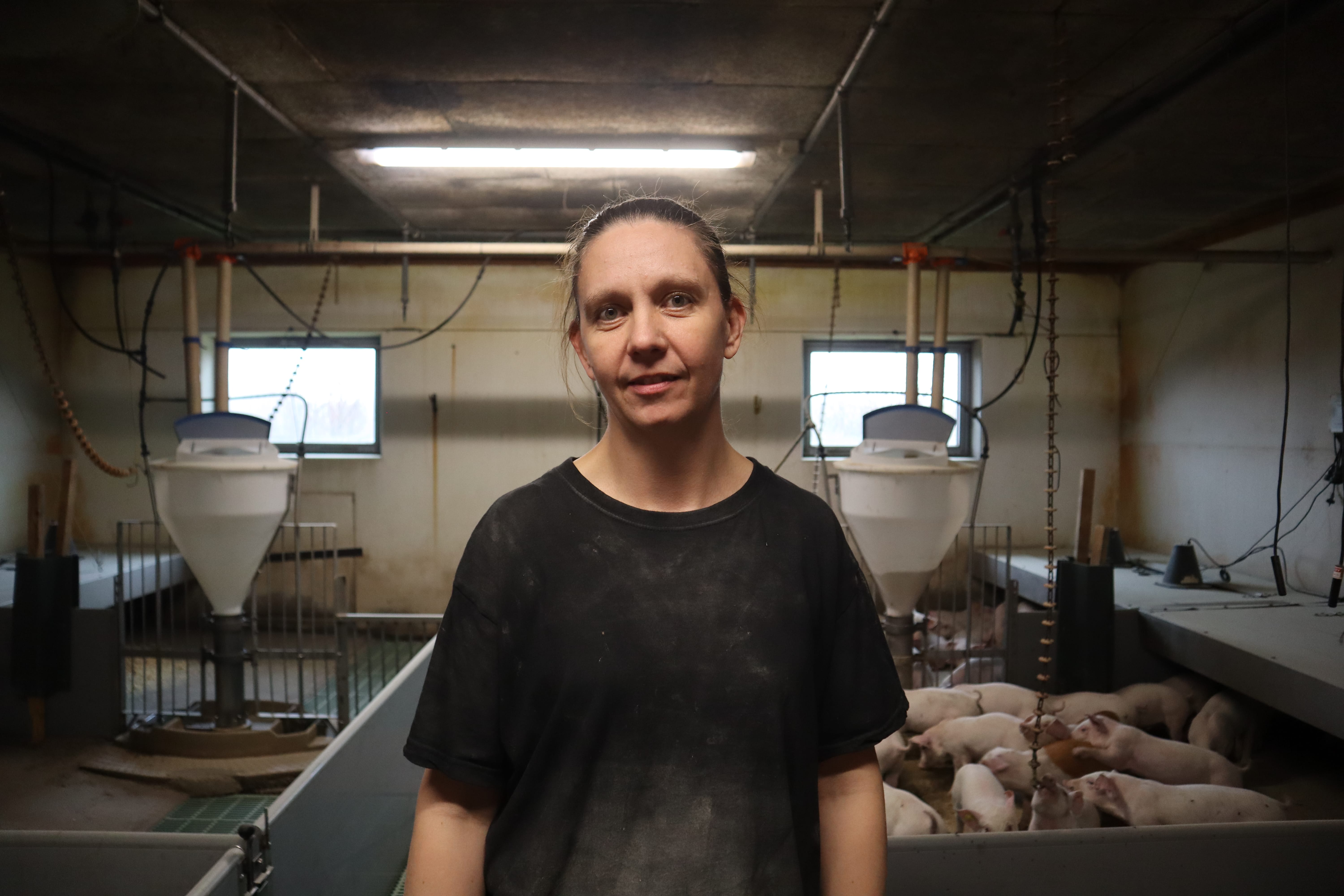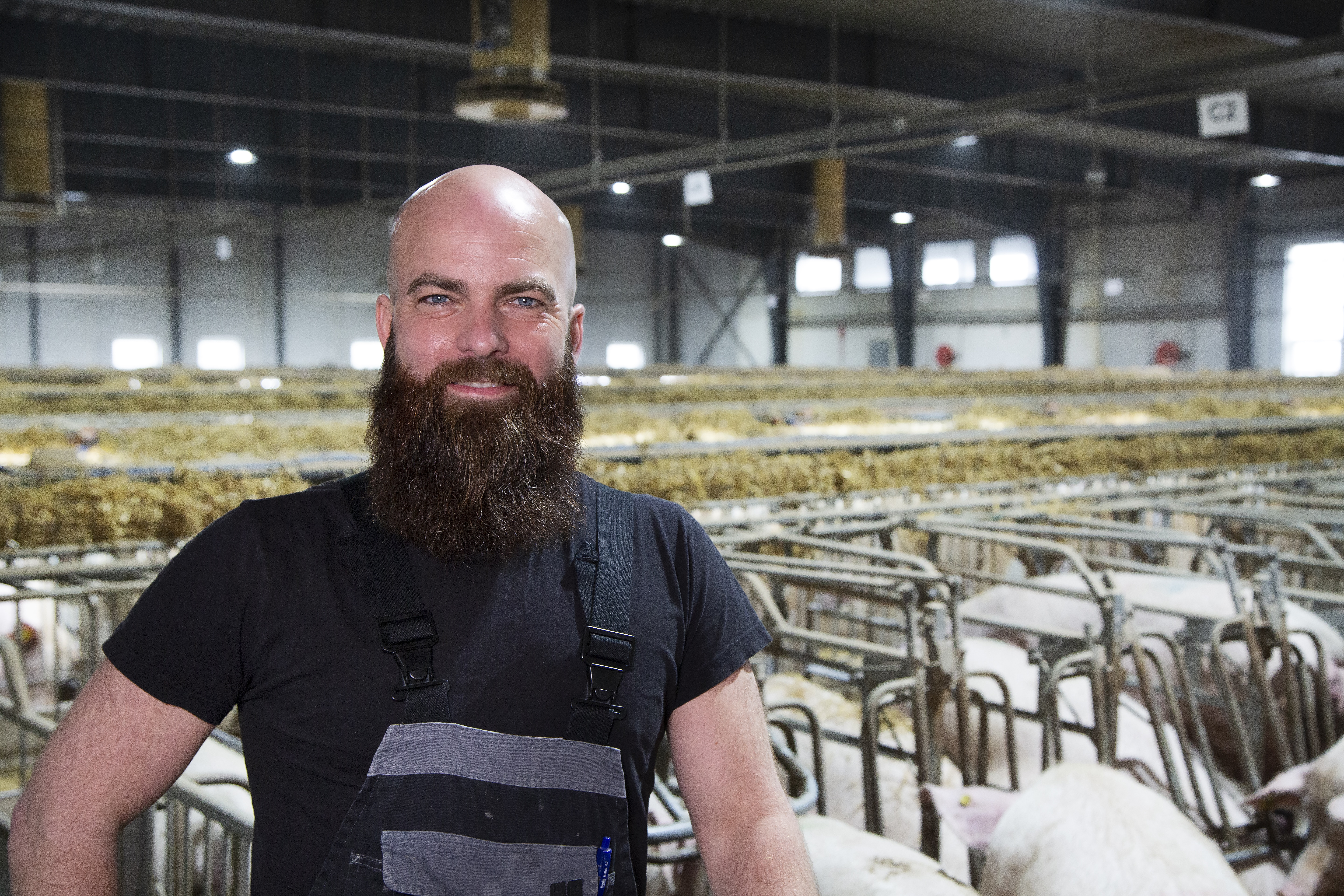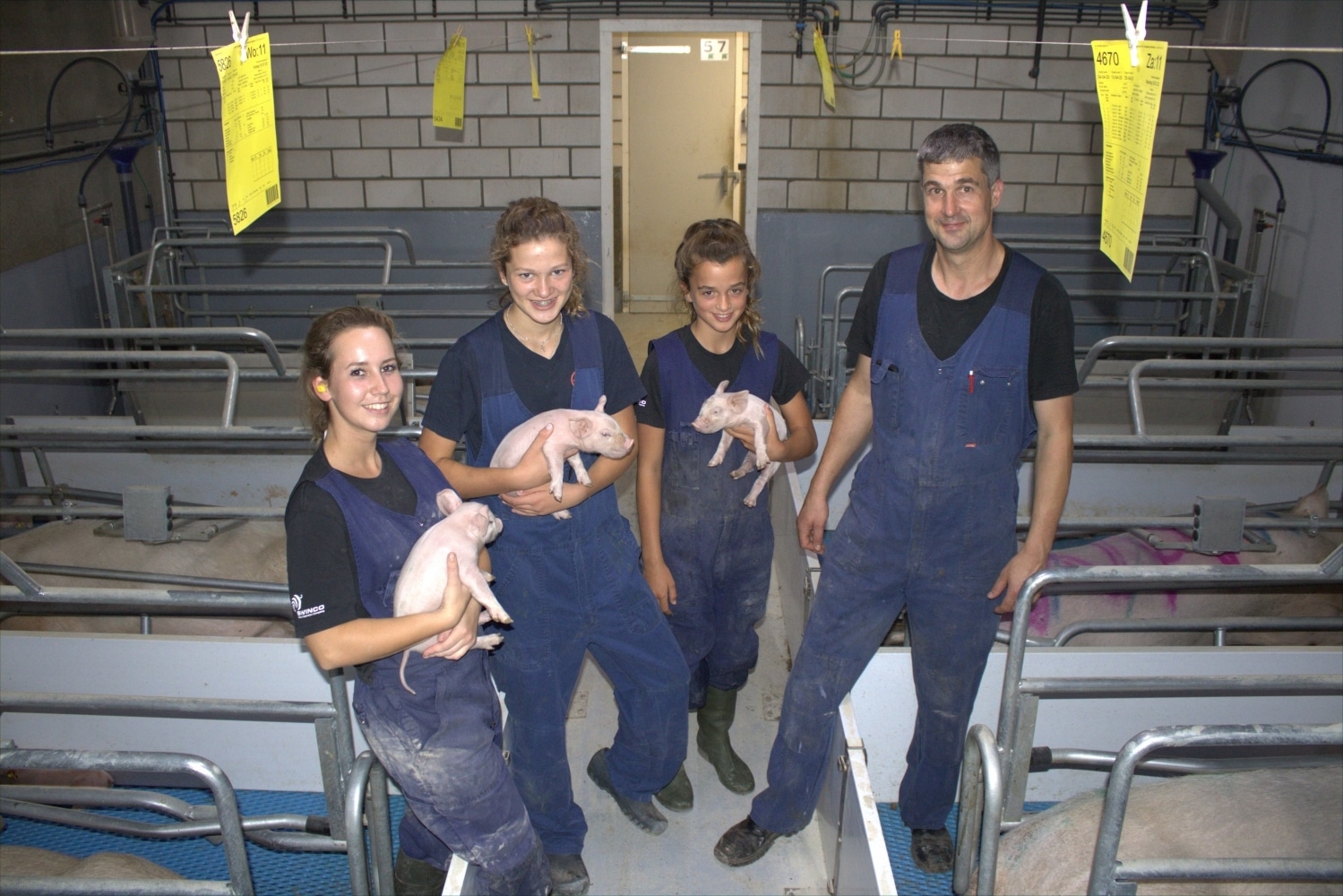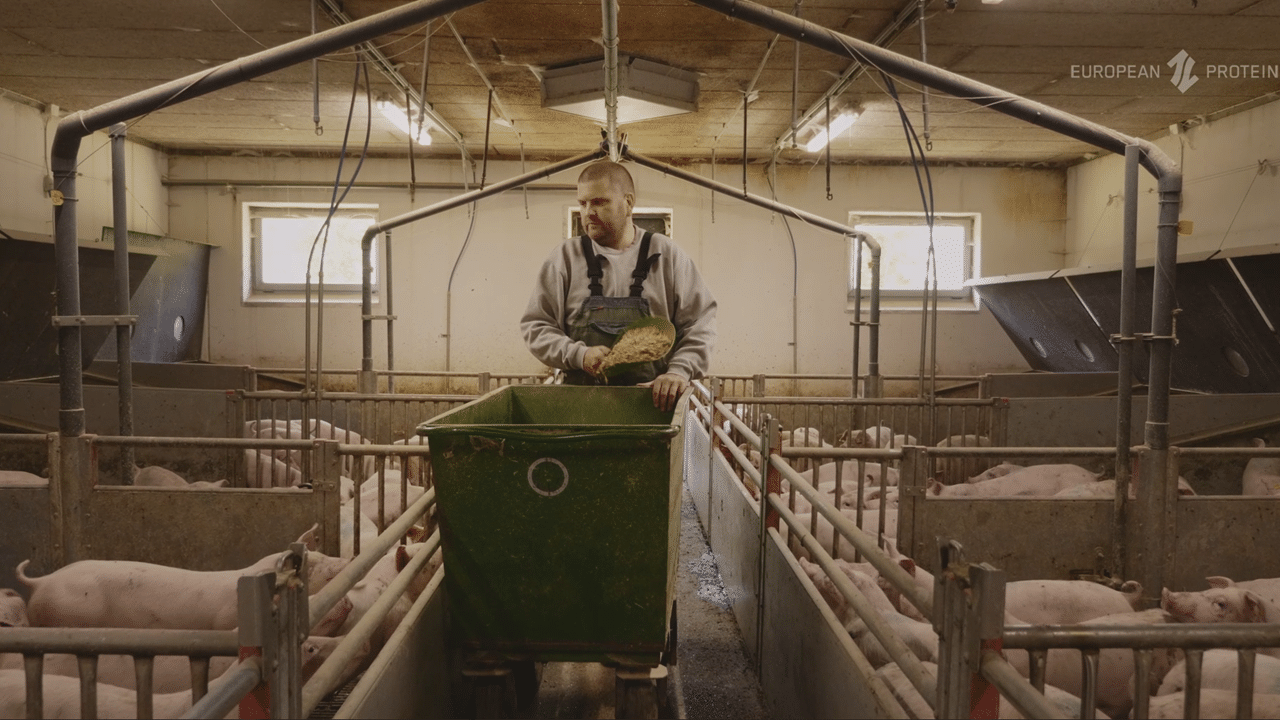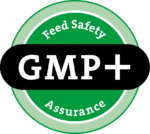
A new path towards greater milk yield in your sow herd
Do you want to increase the sows milk yield and reduce the number of nursing sows? And maybe you already cashed in the benefits of both milk cups and added fibres in the sow feed?
Including EP199 in the sow feed contributes to improved milk production and greater weaning ability. As a result, both sow and farmworkers have an easier time taking care of the piglets and increasing piglet survival.
Read more about how EP199 can help you obtain better results in your pig production.
LARGER LITTERS CHALLENGE SOW MILK YIELD
A continuous increase in litter size means that the demands for sow milk yield increases, putting more strain on sow performance.
Colostrum is particularly crucial for the suckling piglets, as none or too little colostrum often has a deadly exit. Colostrum contains essential antibodies that help the piglets fight infection. Some antibodies remain in the blood for up to six months after farrowing(SEGES).
Lack of milk increases the need for more nursing sows, which in the end reduces profits. That is why milk production and a high weaning ability per sow is a vital production parameter for pig producers.
Some pig producers choose to invest in milk cups to supplement the sow milk, while others think that the sow should fully feed her piglets.
Regardless, a new feed strategy can contribute to improved milking and weaning.
Herds, bacteria, genetics and management differ from farm to farm, and as a consequence, both the speed of and effect of EP199 on milking ability varies.
THE INFLUENCE OF GUT BACTERIA ON MILK YIELD
Your choice of feeding strategy and your focus on gut health affects the sows udder formation, general productivity and ability to produce milk.
Composition and the types of bacteria in the gut microflora co-determines how much milk the sow produces and how many antibodies she passes on to the suckling piglets. Primiparous sows typically pass on less passive immunity to their suckling, and as a consequence, wean fewer and less resilient piglets. The poor performance of primiparous sows can be improved by adding the fermented feed to the diet. The graph below shows that the number of antibodies is enhanced by 40% for primiparous sows. You can expect up to 25% improvement for multiparous sows.
Source: Grela et al., 2019. Find the original scientific paper here
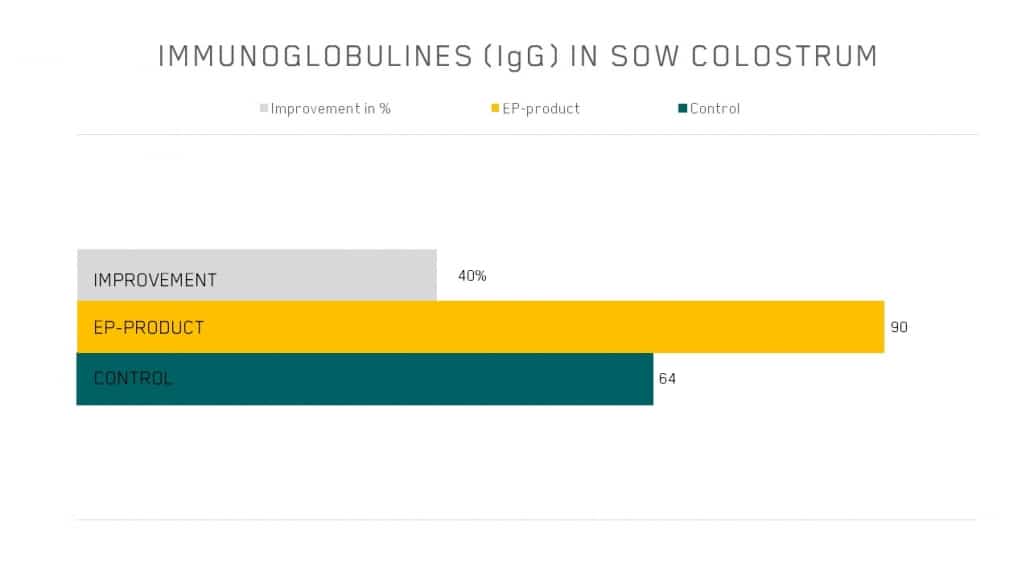
A healthy gut is characterised by a diverse composition of bacteria and where no pathogens are dominating the microflora.
A healthy and balanced gut containing specific bacterias as indicators of gut health provides a long list of health benefits that benefit your production.
The key to a healthy gut is lacto-fermented protein.
THE QUALITY OF THE MILK IS INFLUENCED BY BLOOD PARAMETERS
The number of white and red blood cells influences both milk production and the formation of antibodies.
The function of the red blood cells is to transport oxygen, minerals and nutrients to the embryos and the utter.
White blood cells determine the number of antibodies in the utter and ion the milk. A small part of these antibodies originates from the white blood cells in the sows gut lining(SEGES).
The purpose of the antibodies is to immunize the piglets against pathogens they come across in the sow faeces.
Lactic acid fermented protein helps to reduce the number of pathogens in the sow faeces, which in return reduces the pressure of contamination from sow to suckling pig.
Fermented proteins increase the content of both white and red blood cells which improves the quality and the production of milk through better oxygenation and formation of antibodies.
INCREASE OF PROTEIN AND MINERALS
The protein content in the milk adheres to the amount and the availability of protein in the sow feed.
The sow more easily digests fermented proteins, and consequently, the content of the sow milk is affected. Pay special attention to protein-diarrhoea when you start feeding a more easily digested protein to the sows. Be ready to adjust the protein, even though you are using the same inclusion as you always have.
Also, minerals are more easily utilized by the sow, which means that she passes on a more considerable amount of minerals to the piglets, like zinc, copper and iron. In the table below, you can see, that primiparous sows pass on up to 30% more minerals to the piglets, when fed with fermented feed.
Source: Czech et al., 2019. See the paper here
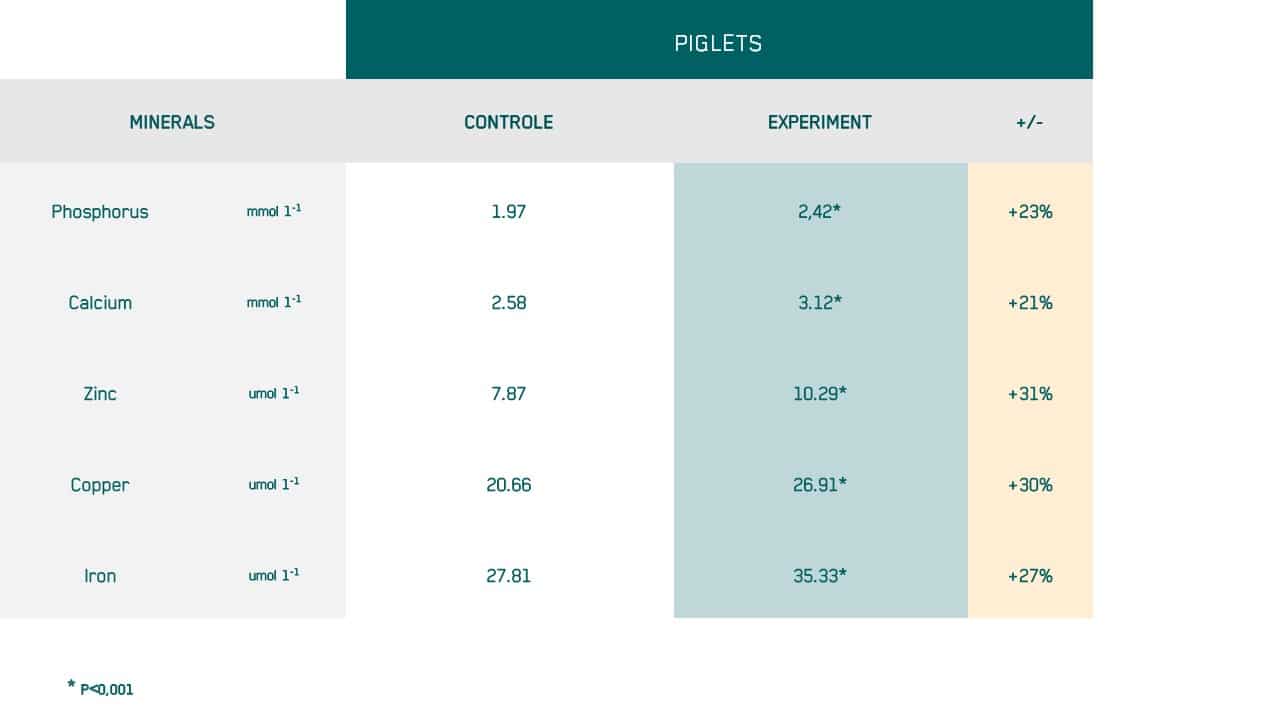
Inflammation interferes with milk production
Inflammation has a particularly negative effect on the productivity of the sow and you will want to decrease inflammation in your sow herd as much as possible.
Inflammation occurs either through physical or mental stress, and you should try to limit the amount of external stress as much as possible. Especially in the time around farrowing.
The physical conditions can be caused by inflammation in the womb or uterus, which decreases the number of piglets born. Inflammation can be the reason for a lack of milk production due to a decrease in energy conversion (SEGES nr. 1196).
Inflammation can be caused by external bacteria or physical damage to the utter, but also by the propagation of pathogens in the gut intestinal tract(SEGES, nr. 1196).
Your feed affect the gut bacteria composition. That is why you need to use a feed to combate infection – like lactic acid fermented protein – and respresses unwanted pathogens.
EP199 reduced inflammation in the sow while repressing the number of pathogens like Clostridium Per. and Fungi by up to 95%.
Source: Grela et al, 2019. Find the original scientific paper here
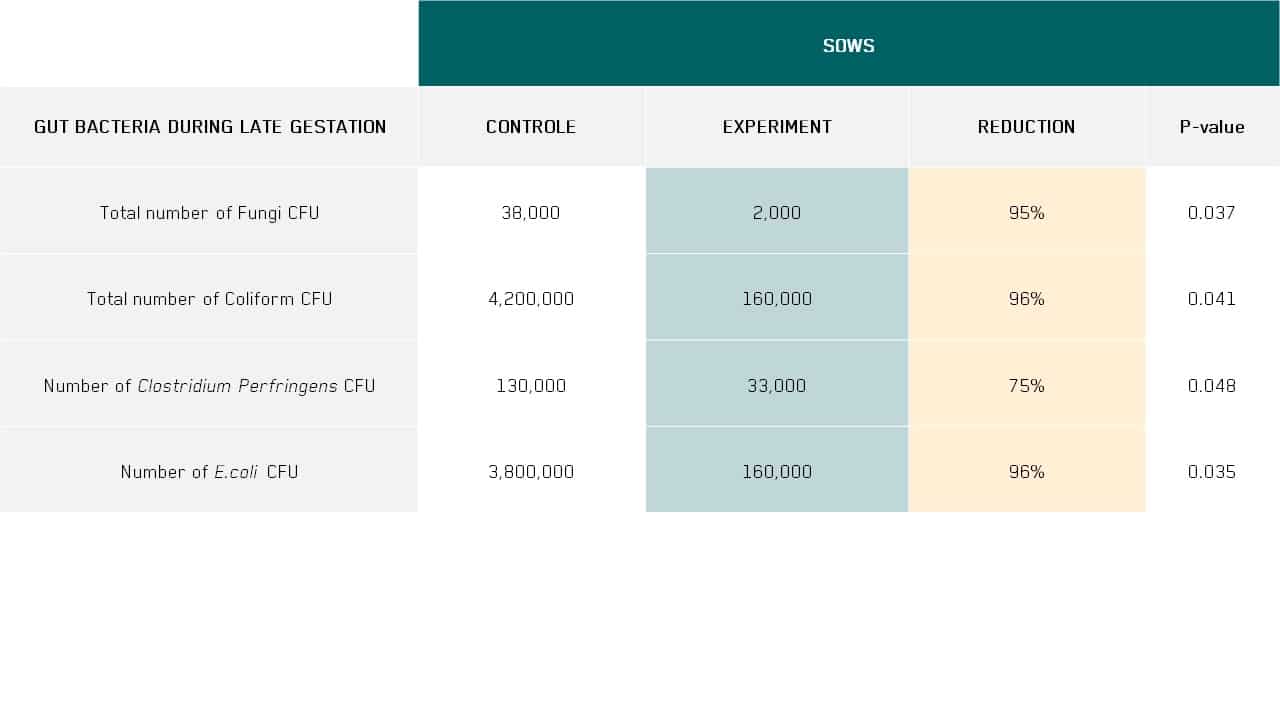
WHAT DOES IT COST TO FEED EP199 TO THE SOWS?
The added cost depends on:
1) what EP199 replaces in your feed,
2) if you mix the feed yourself,
3) the feed consumption of your sow herd and,
4) the cost of your feed today.
We would like to give you an exact price when we have had the chance to go through your optimisation. The typical cost is 23-27 EUR per sow per year.
HOW TO USE EP199
You start by adding 4% EP199 in the gestation section. After the sow has eaten EP199 through the entire gestation period, the inclusion is increased to 9% in the lactation period.
We offer to provide optimization through independent and recognized partners.
IT TAKES TIME TO ACHIEVE GREAT RESULTS
Many customers can hardly wait for better production results, and six months may seem like a long time before you can expect better results. The final results show after two reproductive cycles.
Health takes time because a healthy gut takes time to build, especially if the sow has been reared without a focus on gut health. Younger sows are more quickly and easily affected by interventions than a herd consisting of older sows.
A sudden change in the lactation feed from 0 to 9% of EP199 is too drastic a change and can have a negative effect. Always start in the gestation section and never in the farrowing section.
MORE CASES
ABOUT EUROPEAN PROTEIN
European Protein is a Danish family-owned protein producer. We work to promote health and productivity for animals through functional and sustainable plant proteins. The company was founded in 2011 and has protein factories in Denmark, Ukraine and the US.
HEAD QUARTER
European Protein A/S
Vorbassevej 12, 6622 Bække, Denmark
+45 75 38 80 40, [email protected]
VAT No. 33643675
FACTORIES
Denmark
Mangehøje 4, 7300 Jelling, Denmark
+45 75 38 80 40, [email protected]
Ukraine
222-a Vokzalna Street, Rokytne 09600, Kyiv Region, Ukraine
+38 044 390 40 54, [email protected]
USA
1201 N Ellis Rd #7055, Sioux Falls, SD 57107, USA
+1 605-338-9775, [email protected]

